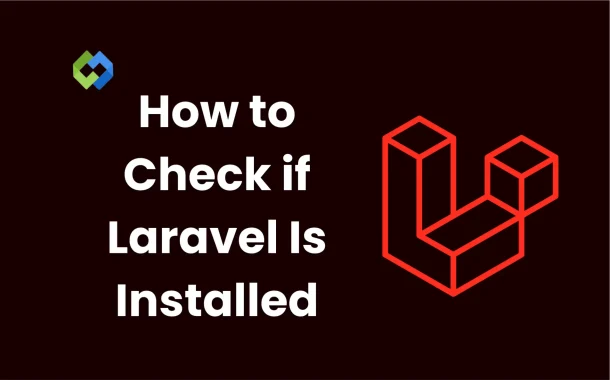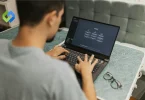It’s important to check if Laravel is installed to ensure your development environment is set up correctly. If you are starting a new project or working with an existing one, you need to know if Laravel is installed and properly configured. Verifying the installation will help avoid errors or issues when running the application. It ensures you can use Laravel’s features without problems.
Table of Contents
Table of Contents
Checking Laravel Version Using Command Line
To check the Laravel version using the command line, here are a few methods you can use.
Using the laravel –version command
This command checks the version of Laravel installed globally on your system. If you have Laravel installed globally, it will show you the exact version you are using. This is helpful if you want to quickly confirm the version of Laravel available for creating new projects.
Using the php artisan –version command
This command is used within your Laravel project. By running it in the project directory, you can see the version of Laravel that is installed for that specific project. It’s the most accurate way to check the version for a particular project.
Using the composer show laravel/framework command
This command checks the version of the Laravel framework that is installed via Composer in your project. Running this in the project directory will give you detailed version information about Laravel and other related dependencies.
Verifying Installation with Composer
These Composer commands are reliable ways to verify that Laravel and its dependencies are installed and properly set up in your project.
Running composer show laravel/framework command
This command helps you check if the Laravel framework is installed in your project via Composer. When you run it in the project directory, it provides detailed information about the Laravel package, such as the version number, dependencies, and installation path. If Laravel is installed correctly, you’ll see a confirmation with version details. This is particularly helpful when you want to check the specific version of Laravel used in your project.
Using composer outdated command
The composer outdated command lists all the packages in your project that are outdated, including Laravel. It shows you which packages have newer versions available, helping you keep your Laravel installation up to date. This command is useful for ensuring that you are using the latest stable version of Laravel and other related packages.
Using composer install command
If you’re unsure whether Laravel or its dependencies are fully installed, running the composer install command will install or update the necessary packages based on the composer.json file in your project. This will ensure that Laravel and all required dependencies are properly set up. If Laravel is not installed, this command will automatically fetch and install it along with all other necessary components.
Checking Laravel Environment Files
Checking these files helps ensure that the environment is set up properly, and Laravel is configured to run as expected in your project.
Inspecting the .env file
The .env file is a key configuration file for Laravel projects. It contains environment variables that define the app’s settings, like the database connection, mail server, and application key. If this file is present in the root of your project, it’s a strong indication that Laravel is installed. Opening this file also allows you to check if key configuration values, such as APP_ENV and APP_KEY, are set correctly.
Verifying the .env.example file
Along with the .env file, Laravel projects often include an .env.example file. This file serves as a template and can be copied to create the .env file. If both files are present in your project directory, it further confirms that the Laravel framework is installed and correctly structured for environment configuration.
Testing the Laravel Application in Browser
To test the Laravel application in the browser and ensure it’s properly installed, you can follow these steps.
Checking Default Routes
Laravel includes a default route that serves as a test to verify if the application is running correctly. After setting up Laravel, you can access the application in the browser by visiting http://localhost. If the Laravel welcome page appears, it means the installation was successful. This page confirms that the Laravel routes and web server are functioning as expected.
Verifying the Application’s Response
If the welcome page doesn’t load or you’re unsure about the installation, you can try accessing specific routes from the routes/web.php file. For instance, you can add a simple test route and visit it in the browser to check if the application responds correctly. This is an effective way to ensure the application’s routes and views are properly set up.
FAQs
Can I check if Laravel is installed without using the command line?
Yes, you can check by visiting your project in a browser and seeing if the Laravel welcome page loads. If it does, Laravel is installed.
What if I don’t see the Laravel version with the php artisan –version command?
If the version doesn’t show, it might mean Laravel is not installed correctly. You may need to recheck the installation steps or run composer install to fix missing dependencies.
Is there a way to check Laravel installation using a graphical interface?
There isn’t a built-in graphical tool for checking Laravel installation. You must rely on the terminal or browser to verify the installation.
Do I need any special permissions to check if Laravel is installed?
No, you don’t need special permissions to check Laravel installation. You just need to run the appropriate commands in the project directory.
What should I do if I cannot find the .env file?
If the .env file is missing, it could mean the Laravel installation isn’t complete. You can copy the .env.example file to create a new .env file and set up the environment variables.
Conclusion
Checking if Laravel is installed can be done easily using a few simple methods. You can use command-line tools like laravel –version, php artisan –version, or Composer commands to verify the installation. These steps help confirm if Laravel is properly set up on your system or project.
If the version is displayed and the necessary files like .env exist, your installation is likely successful. Testing the application in the browser is another quick way to confirm that everything is running smoothly. Following these steps will ensure Laravel is ready for use in your development project.














